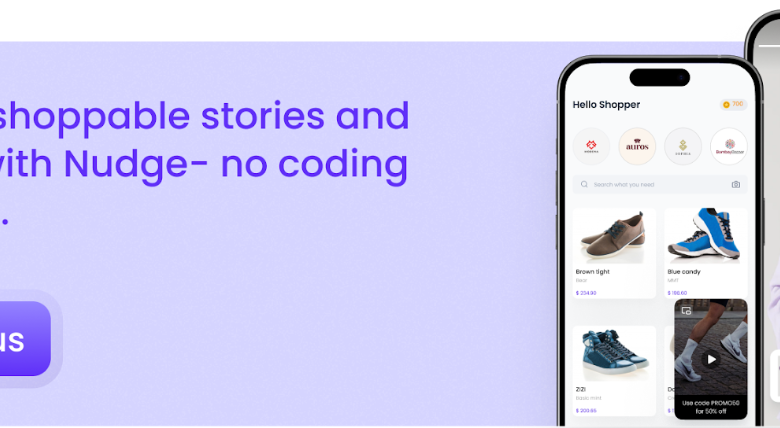Creating an Effective Mobile App Engagement Strategy

The mobile app space is fiercely competitive, and creating an app is just the beginning. The real challenge lies in engaging users and keeping them hooked. But how do you ensure your app remains relevant and indispensable to users? Let’s break down the essentials of a robust mobile app engagement strategy.
What is Mobile App Engagement, and Why Does it Matter?
Mobile app engagement refers to how often and how effectively users interact with your app. It’s not just about downloads, it’s about creating meaningful experiences that turn one-time users into loyal advocates.
Why it matters:
- Engaged users are 3x more likely to make in-app purchases.
- Apps that fail to engage users lose 90% of their user base within 30 days of download.
A strong engagement strategy boosts retention, drives conversions, and enhances overall user satisfaction.
Key Elements of an Effective Engagement Strategy
1. Personalization: Know Your Audience
Personalization is the foundation of modern app engagement. Users expect experiences tailored to their preferences, behaviors, and needs.
How to personalize effectively:
- Cohort creation: Tools like Nudge let you segment users based on behavior, demographics, or data from your CRM.
- Dynamic user flows: Design custom journeys using drag-and-drop visual builders to guide users through onboarding, feature discovery, or purchase paths.
- In-app nudges: Offer contextual recommendations, such as suggesting products or features based on usage patterns.
2. Seamless Onboarding: First Impressions Count
The onboarding experience sets the tone for user engagement. If users struggle to understand your app, they’ll likely abandon it.
Best practices for onboarding:
- Use interactive onboarding tours to introduce key features.
- Include checklists or progress bars to motivate users to complete the setup process.
- Offer instant gratification through small rewards or incentives for completing onboarding.
3. Gamification: Make Engagement Fun
Gamification taps into users’ natural desire for competition, achievement, and rewards.
Engagement-boosting gamification ideas:
- Loyalty programs: Reward users for repeated app usage.
- Challenges and streaks: Encourage consistent behavior, like daily check-ins or fitness goals.
- Quizzes and polls: Keep users engaged while gathering valuable insights.
- Game zones: Create dedicated spaces for interactive mini-games or rewards.
Gamification not only entertains but also builds emotional connections, making users more likely to return.
4. Shoppable Stories and Videos: Enhance Discovery
Incorporate engaging media like stories and videos to capture attention and drive action.
Pro tip:
- Add shoppable stories to showcase products or services directly within the app.
- Use interactive videos to explain features or provide tutorials, shortening the path to action.
These features transform your app into a discovery and conversion powerhouse.
5. Real-Time Feedback: Listen to Your Users
Gathering and acting on feedback helps you refine the user experience and demonstrate that you value your users’ opinions.
How to integrate feedback loops:
- Use in-app surveys and polls with intelligent logic to keep them relevant.
- Offer rewards for completing feedback forms to encourage participation.
- Analyze responses to identify pain points and address them proactively.
6. Analytics-Driven Insights: Optimize Continuously
Real-time analytics are your best friend in understanding user behavior and refining your engagement strategy.
What to track:
- Session duration: How long do users stay in the app?
- Feature usage: Which features are most or least popular?
- Drop-off points: Where do users lose interest?
Using tools like Nudge’s analytics can help uncover these insights, enabling you to tweak your strategy for maximum impact.
7. Inline Widgets and Nudges: Keep Users Engaged
Inline widgets and nudges are subtle yet powerful tools for engagement.
Ways to use them:
- Highlight new features with spotlights.
- Use walkthroughs to explain complex processes.
- Offer in-app messages to celebrate user milestones, like completing a goal or earning a reward.
These interactive elements ensure users stay informed and engaged without feeling overwhelmed.
Avoiding Common Pitfalls
- Overloading Users: Bombarding users with too many messages or features can backfire. Prioritize clarity and relevance.
- Ignoring Data: Engagement strategies should be data-driven. Gut instincts alone won’t cut it.
- Lack of Consistency: Inconsistent updates or rewards can frustrate users. Maintain a predictable cadence.
Conclusion
Creating an effective mobile app engagement strategy isn’t a one-time task, it’s an ongoing effort to understand, connect with, and delight your users. From personalization to gamification, each element plays a role in building an app that users love and rely on.
Ready to elevate your app engagement game?
Book a demo with Nudge today and see how you can transform your user experience!



